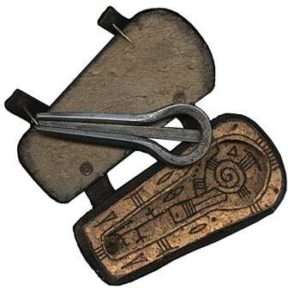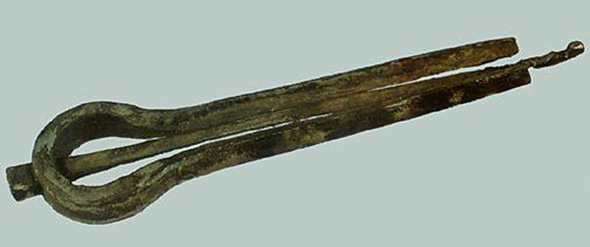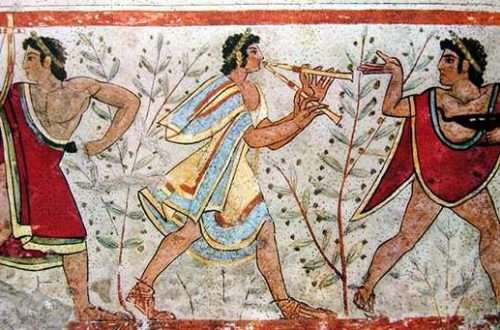
History of the Vargan
Contents
Vargan is a reed musical instrument related to idiophones according to the principle of operation.  In this class, the sound is produced directly by the body or the active part of the instrument and does not require string tension or compression. The principle of operation of the jew’s harp is extremely simple: the instrument is pressed against the teeth or lips, while the oral cavity serves as a sound resonator. The timbre changes when the musician changes the position of the mouth, increases or decreases breathing.
In this class, the sound is produced directly by the body or the active part of the instrument and does not require string tension or compression. The principle of operation of the jew’s harp is extremely simple: the instrument is pressed against the teeth or lips, while the oral cavity serves as a sound resonator. The timbre changes when the musician changes the position of the mouth, increases or decreases breathing.
The history of the appearance of the harp
Due to the relative ease of manufacture and an extensive range of sounds, jew’s harps, independently of each other, appeared in the cultures of different peoples of the world. Now more than 25 varieties of this instrument are known.
European varieties
In Norway, the munharpa has become one of the instruments of folklore. A distinctive feature of the instrument is that it was often made from animal bones. The English jew’s-harp is a popular instrument to this day, practically no different from the jew’s harp. Due to the policy of the British Empire, in many of its former colonies (including the USA), labial idiophones are still called jew’s-harp. The German tribes living in the territories of modern Germany and Austria invented their own variety – maultrommel. The musical instrument was carved from wood, and the craftsmen played it at every holiday. In Italy, there is an instrument – marranzano, which is no different from the familiar jew’s harp. In turn, the ancient settlers from Asia brought a musical instrument, the Doromb, to Hungary. Perhaps it was the Hungarian doromb that became the prototype of all European idiophones.
The English jew’s-harp is a popular instrument to this day, practically no different from the jew’s harp. Due to the policy of the British Empire, in many of its former colonies (including the USA), labial idiophones are still called jew’s-harp. The German tribes living in the territories of modern Germany and Austria invented their own variety – maultrommel. The musical instrument was carved from wood, and the craftsmen played it at every holiday. In Italy, there is an instrument – marranzano, which is no different from the familiar jew’s harp. In turn, the ancient settlers from Asia brought a musical instrument, the Doromb, to Hungary. Perhaps it was the Hungarian doromb that became the prototype of all European idiophones.
Asian Vargans
Many historians believe that sound idiophones came to us from Asia along with the great migration of peoples. After all, in fact, almost every Asian people had their own instrument, which, according to the principle of operation, was similar to a jew’s harp. Perhaps the first jew’s harp was the Iranian zanburak. Persian priests used various timbres of zanburak to intimidate kings and create a mythical atmosphere. Not a single prediction of the priests passed without the frightening music of the jew’s harp.

In ancient times, Japan and China actively traded with each other. At the same time, there was a cultural exchange of the island state with a large continent. The Chinese jew’s harp is called kousian, the Japanese – mukkuri. Both idiophones were made according to the same technology and from the same material, but they were called differently. Morchang is a jew’s harp native to the Indian state of Gujarat. True, in central India this idiophone is not particularly common. In Kyrgyzstan and Kazakhstan, there are also varieties of this instrument: temir-komuz and shankobyz, respectively.
Vargans in Russia, Ukraine and Belarus
During the cultural exchange with Asian countries, the instrument quickly spread among all Slavic peoples. The name “harp” came to us from central Ukraine. On the territory of Belarus, the jew’s harp was called drumla or drymba. In Russia, the Ukrainian name has mainly taken root, although other names of the instrument are sometimes used: — Hummus; — Tumran; – Baths yarr; — Comus; — Iron-humus; — Timir-homuc; — Kubyz; — Kupas; – Thursday.
A simple musical instrument has united almost half of the countries of Eurasia with its history. This instrument was used in classical and folk music by well-known composers and simply virtuoso musicians. Even now there are craftsmen of playing the jew’s harp, because even despite its simplicity, unusual, beautiful and mystical melodies can be played on the jew’s harp.





